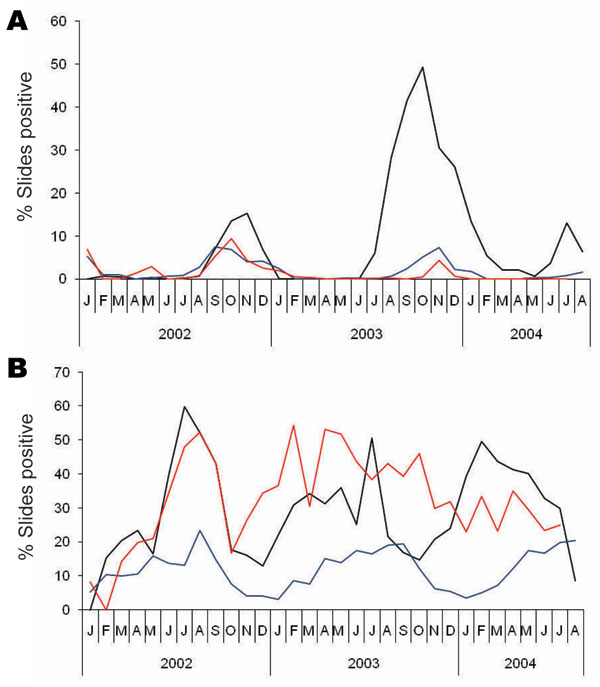Volume 15, Number 11—November 2009
Research
Epidemic of Plasmodium falciparum Malaria Involving Substandard Antimalarial Drugs, Pakistan, 2003
Figure 3

Figure 3. Slide positivity rate (% slides positive) for A) Plasmodium falciparum and B) P. vivax malaria in refugee camps in Khurram Agency, Pakistan, 2002–2004. Black lines indicate Ashgaroo camp, red lines indicate Bassoo and Old Bagzai camps combined, and blue lines indicate the remaining 6 older camps.
Page created: December 09, 2010
Page updated: December 09, 2010
Page reviewed: December 09, 2010
The conclusions, findings, and opinions expressed by authors contributing to this journal do not necessarily reflect the official position of the U.S. Department of Health and Human Services, the Public Health Service, the Centers for Disease Control and Prevention, or the authors' affiliated institutions. Use of trade names is for identification only and does not imply endorsement by any of the groups named above.